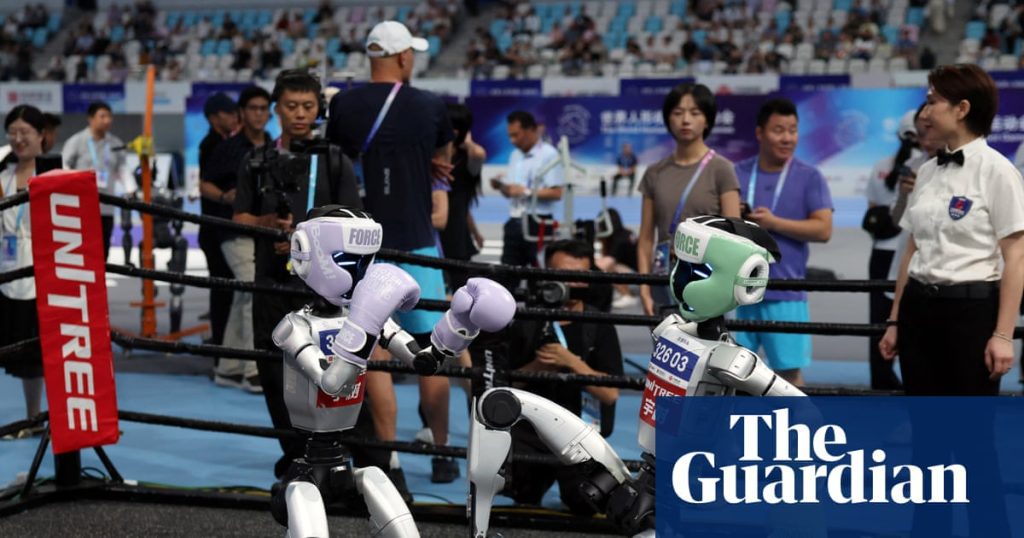A Robot Kickboxing Match
A swift left hook, a kick to the chest, a flurry of jabs—cheers erupt from the audience. However, the match concludes not with skillful strikes but with a failed roundhouse kick that sends a university team’s robot crashing to the floor.
Challenges in Robotics
Unlike traditional kickboxing, which poses risks of injury, the competitors at the World Humanoid Robot Games in Beijing faced unique challenges. Key factors included balance, battery life, and the underlying philosophy driving their design.
The Spectacle of Humanoid Robots
These pint-sized humanoid robots entered by teams from top Chinese tech universities showcased their capabilities as part of a larger exhibition at China’s newest tech event. The competitions kicked off at the National Speed Skating Oval, built for the 2022 Winter Olympics, after attendees observed the Chinese national anthem.
A Spectator’s Insight
Hong Yun, a retired engineer sitting in the front row, expressed that he attended out of curiosity, saying, “Watching the robots was far more thrilling than watching humans.”
Showcasing Technological Prowess
The games highlighted China’s advancements in humanoid robotics, a segment crucial to its artificial intelligence industry. Events included kickboxing, athletics, football, and dance competitions, showcasing the depth of technological innovation. One robot had to withdraw from a race when its head detached mid-course, revealing the challenges of maintaining balance.
Geopolitical Context
The vibrant events also reflect serious geopolitical dynamics, particularly the technological competition between the U.S. and China. While the U.S. leads in cutting-edge research, China focuses on practical applications, especially in robotics, supported by significant financial investments.
Future of Humanoids
China sees humanoid robots as a solution to challenges posed by an aging population and a shrinking labor force. Despite the excitement surrounding this technology, experts caution that significant gaps remain in their ability to perform routine tasks safely. While China has made notable progress, practical applications in everyday settings still face hurdles, particularly involving dexterity and navigation skills.



